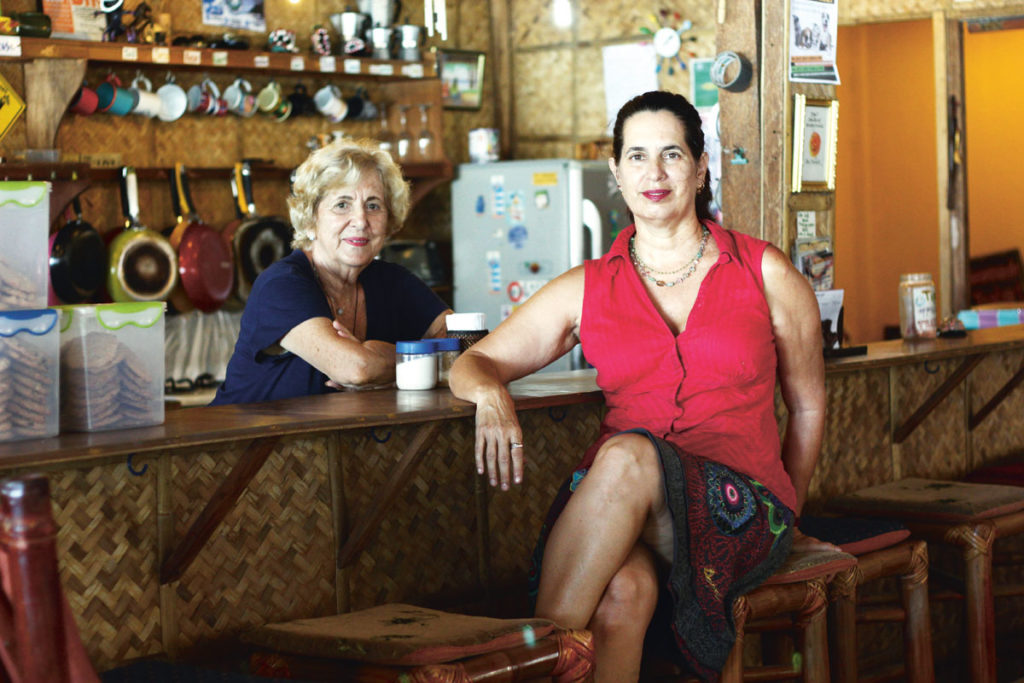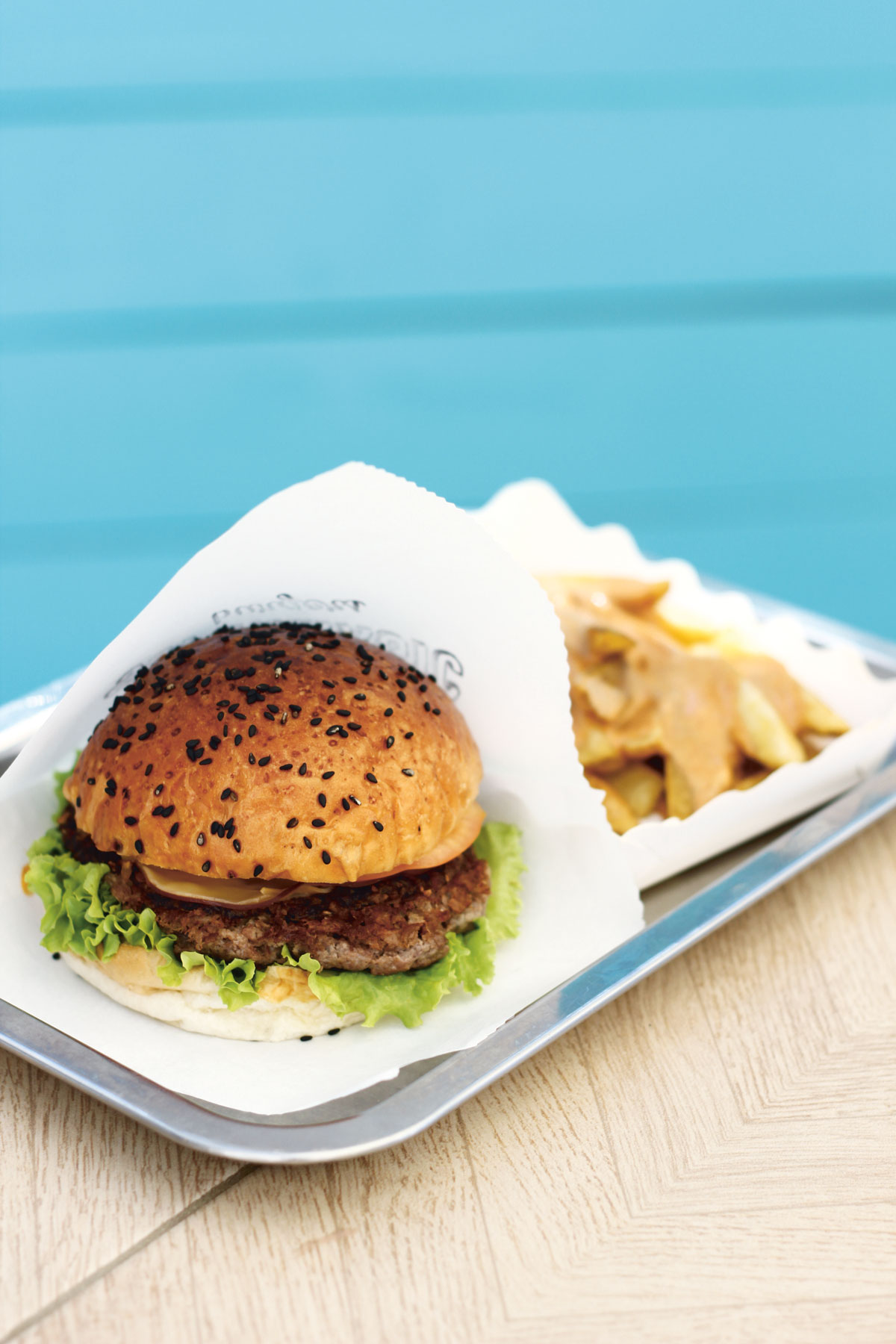With multiple magazine and online mentions as a must-visit beach destination, Boracay has definitely been pulling more and more tourists from all corners of the globe over the past few years. It is already expecting 10 cruise ships to come in this year, according to Aklan governor Florencio Miraflores.
More tourists from Kuala Lumpur are also predicted to fly in, especially after Boracay was recently cited as Malaysia’s “Favorite Beach Destination” at the Malaysian Association of Tour and Travel Agents’ annual tourism fair. While that may work in favor of the country’s tourism industry, does it fare positively for the F&B businesses on the island?
Well, the restaurateurs seem not to be completely all for it.
Local concerns

Astoria Boracay’s White Café is an attraction in and of itself with its marriage of Asian and Western cuisine and delightful buffet and à la carte menus. While it has been around for five years, restaurant manager Eric Domingo and resort manager Yves Remondeulaz work hand in hand to maintain a consistent flow of diners.
“[A lot of our customers are] part of the tour groups,” says Domingo. But even with an established niche market, Remondeulaz explains the percentage of tourists hasn’t always been positive. “For the past two years, it tampered up a bit. You could see in 2010 or 2011, [the volume of tourists] jumped by 34 percent. But then 2013 to about 2014, it went down to 10 percent. Around 2014 to 2015, [the volume of tourists] rounded to five to six percent. [Don’t get me wrong], not that it has gone down, it just has not increased,” he says.
Remondeulaz explains the volume of the crowd hasn’t plummeted but simply shifted. “The people who don’t come back anymore are the well-off Filipino families who used to come in the ’80s and ’90s. They stopped doing so because it has become too crowded,” he explains.
On the issue of resort developments often blamed for ecological damage, he says they aren’t the ones entirely at fault. “The more development you have, the more staff you need. Established resorts have proper staff houses and sewage treatment, but there are those that simply [make do by using] bamboo and different methods for sewage. This is what people don’t realize: It is not the big resorts entirely, it is also the small individual [businesses that may be causing this pollution],” he stresses.

Service disputes
Not a long way down the beach, another restaurant faces a similar problem.
Branch manager Reginald Loyola stands as the acting manager of seven-year-old I Love Backyard BBQ. Staff loyalty is essential to the business as the waitstaff is sometimes interchanged between I Love Backyard BBQ, Pamana, and Hawaiian BBQ during peak months. I Love Backyard BBQ alone is jam-packed during dinner, thanks to its consistent market of Korean tour groups.
“It’s not so much a challenge [to keep up with international fast food chains] as we have our own customers. Among Koreans pa lang alam na nila ang I Love Backyard BBQ,” says Loyola. He explains that the volume of customers was never the main problem but rather the sometimes unreasonable demands.
“Minsan kapag matagal ‘yung service, hahanapin na agad ‘yung manager. Which is fine, but sometimes they also need to understand na kaya tumagal ’yung service kasi minsan ang dami na talagang tao.”

It’s the same for one of the longest-running businesses on the island: Station 2’s Real Coffee, famed for its calamansi muffins. Described by owners Lenore and Nadine Rosaia as a simple café serving quality home-cooked food, many wonder about the strategy behind Real Coffee’s success despite its simplicity.
In operation since 1996, the food and beverage landscape certainly presented challenges for the mother-and-daughter duo. “The challenges in the beginning were very different from the ones we face now. There was the lack of consistent energy; there was no water supply. There weren’t that many things on the island so our stocks were also limited, which meant our first menu was also very small,” recalls Nadine.
Quite similar to I Love Backyard BBQ’s ordeals, customer demands take a toll on the brand’s image. “In the Philippines, social media has really taken off, and so our greatest challenge is trying to please everybody. And this is hard because I feel like a lot of people these days feel as if they are food critics,” she explains.
Her resolution? Consistency in service. “People look for us. We have a reputation, a niche. We’re not trying to keep up with all the restaurants,” Nadine says with a smile, although she does not deny that aggressive competitors have created a more professional environment.

Discerning dilemma
Set up by the same owners of Spicebird and Sunny Café, Super Magic Burgers (SMB) in Station 3 is making a name for itself by grinding made-to-order burgers from scratch. Veering away from processed food, it thrives on serving burgers with high quality ingredients. But its unique selling point oftentimes becomes its greatest challenge.
“Sometimes [ingredients] are hard to come by here. Everything has to be shipped. Some of the special ingredients that we use, such as smoked cheese, our beef, the Japanese mayo, have to come from Manila,” says owner Nowie Potenciano.

With supply coming from Manila, SMB doesn’t really deal with lack of supply or worry about the sheer volume of tourists, but Potenciano believes that the desire for more discerning diners should be a main concern. “From what we’ve seen and read, the tourist arrivals have been increasing every year by 10 percent, which is great in terms of volume, but we do wish sometimes we could attract more [discerning] customers,” says Potenciano.
He explains that they have noticed the local food scene evolving too, which is why he stresses the benefits of having restaurants unique to the island. While Boracay may be known for the beach, marketing Boracay as a food destination provides another leg to attract tourism.
The rise in volume of tourists overcrowding Boracay is definitely noticeable, but it has yet to reach the point of slowing down. Despite more environmental and identity issues surrounding Boracay, and varied and shared challenges faced by local businesses, new restaurants continue to pop up on every corner.
But the question remains: Is it still viable to sell by the shores? The continuous profit of businesses, both old and new, seems to indicate that it is. But Boracay’s food scene has gone beyond asking for good food. The island has undergone a transformation of business culture and, more importantly, gained a set of discerning diners that continues to expect more.
Originally published in F&B Report Vol. 13 No. 2





